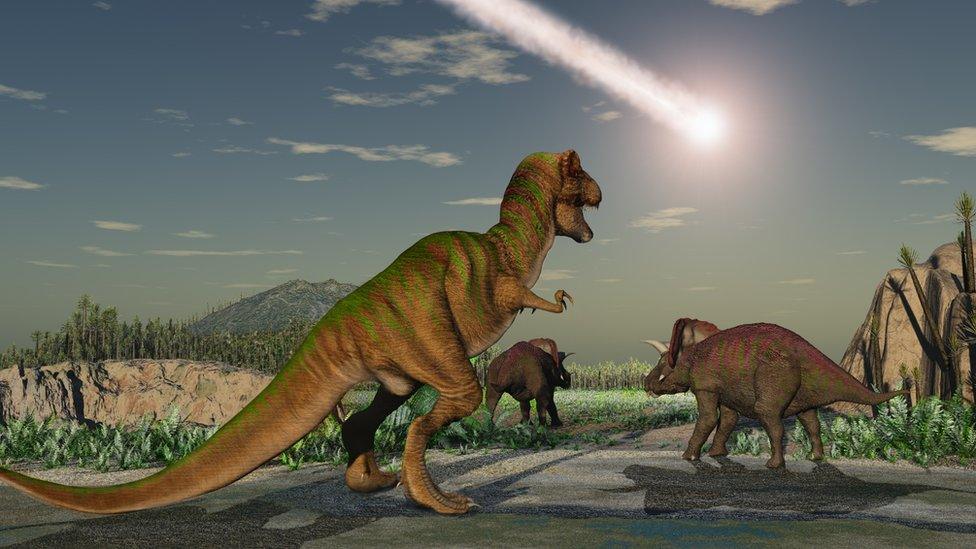Asteroid bought an end to the dinosaurs, crater rocks show
- Published
- comments

Scientists have long known that the end of the dinosaurs came because of a giant asteroid, but now geologists have found hard evidence by studying the rocks that filled the crater formed by the impact.
About 66 million years ago a giant asteroid travelling about 15 miles a second hit the coast of what is now Mexico.
The impact caused wildfires, tsunamis and put so much sulphur into the atmosphere that it blocked the sun. This caused the Earth to cool rapidly bringing the extinction of the dinosaurs.
Now a study by the University of Austin in Texas has confirmed the theory.
By drilling into the rock below the Chicxulub crater to take out samples 500 to 1,300 metres (1,640 to 4,265 feet) below the seafloor, geologists - scientists who study the Earth - were able to analyse the rocks which filled the crater 24 hours after it was hit.
Dinosaurs lived for about 180 million years before they became extinct
Inside the crater, researchers found charcoal and soil fungi in, or just above, layers of sand that show signs of being deposited by rising waters.
This showed experts that the burnt landscape was pulled into the crater with the waters of the tsunami.
Most interestingly, no sulphur was found in the core of the crater which supports the idea that when the asteroid hit, sulphur from the crater was released into the atmosphere.
Researchers estimate that at least 325 billion metric tons would have been released by the impact.
This destroyed Earth's existing climate, blocking out the sun and causing a global cooling.
It was this global climate change that caused a mass extinction, killing off the dinosaurs along with most other life on the planet at the time.
- Published17 May 2019
- Published30 July 2019
- Published6 August 2019
